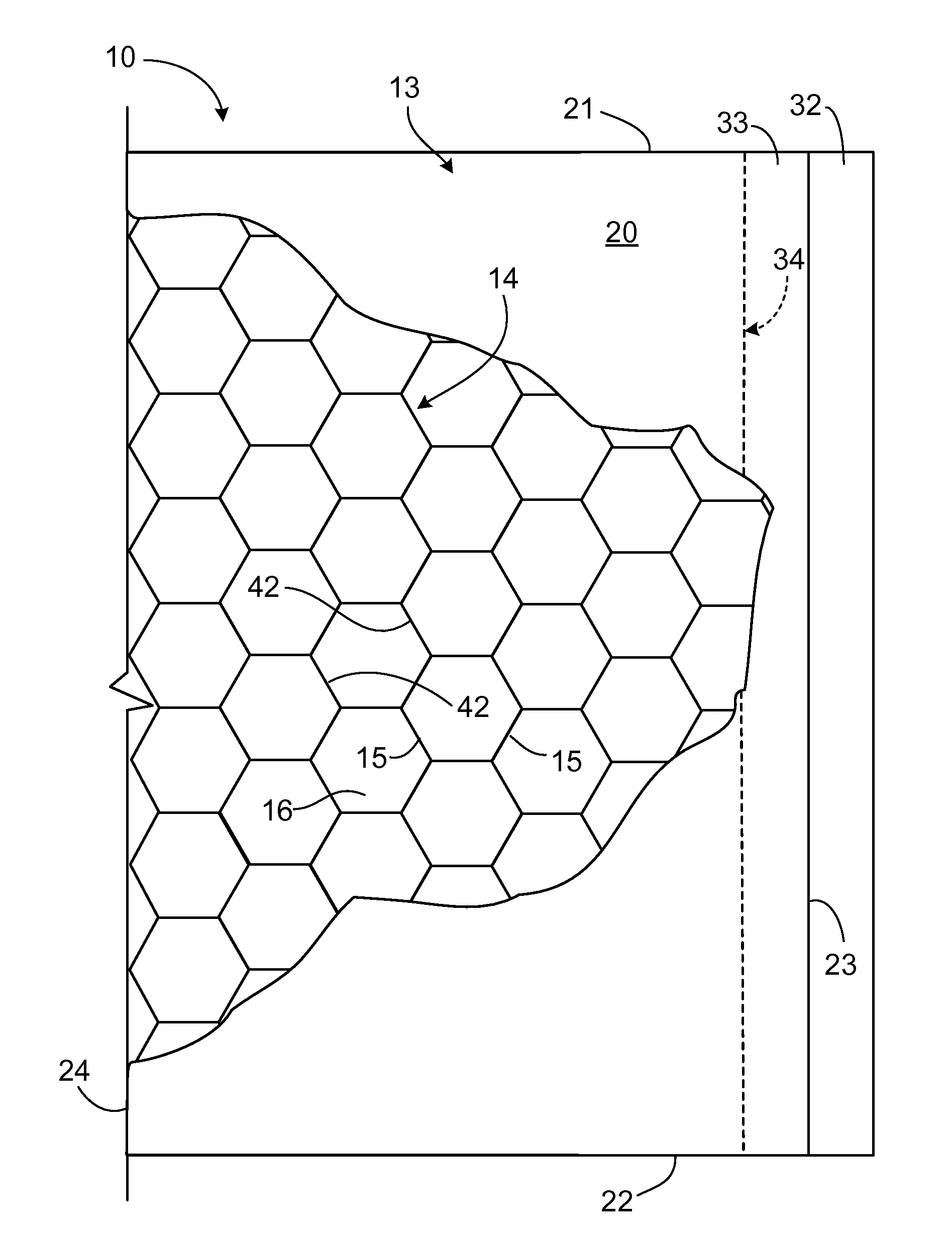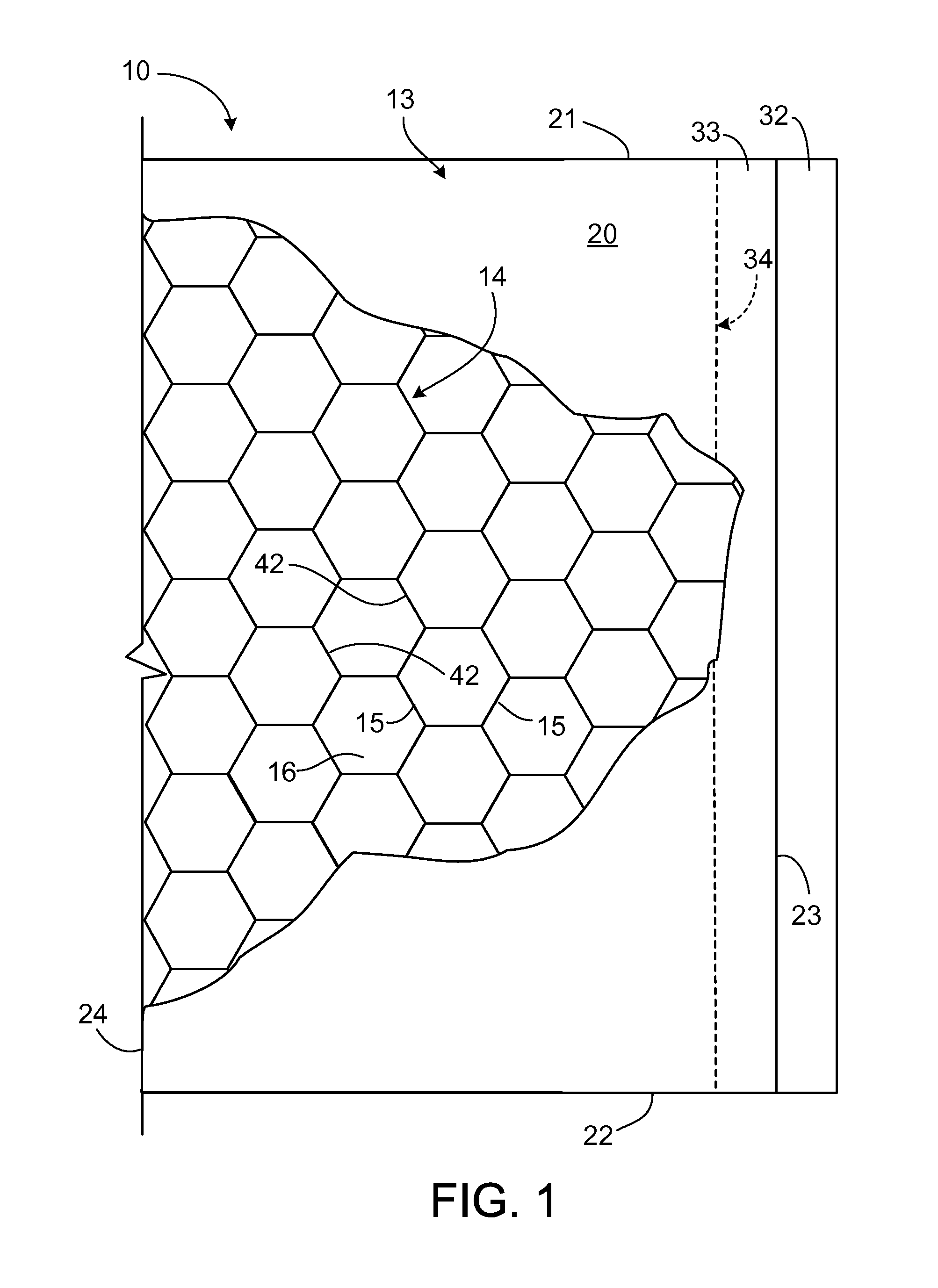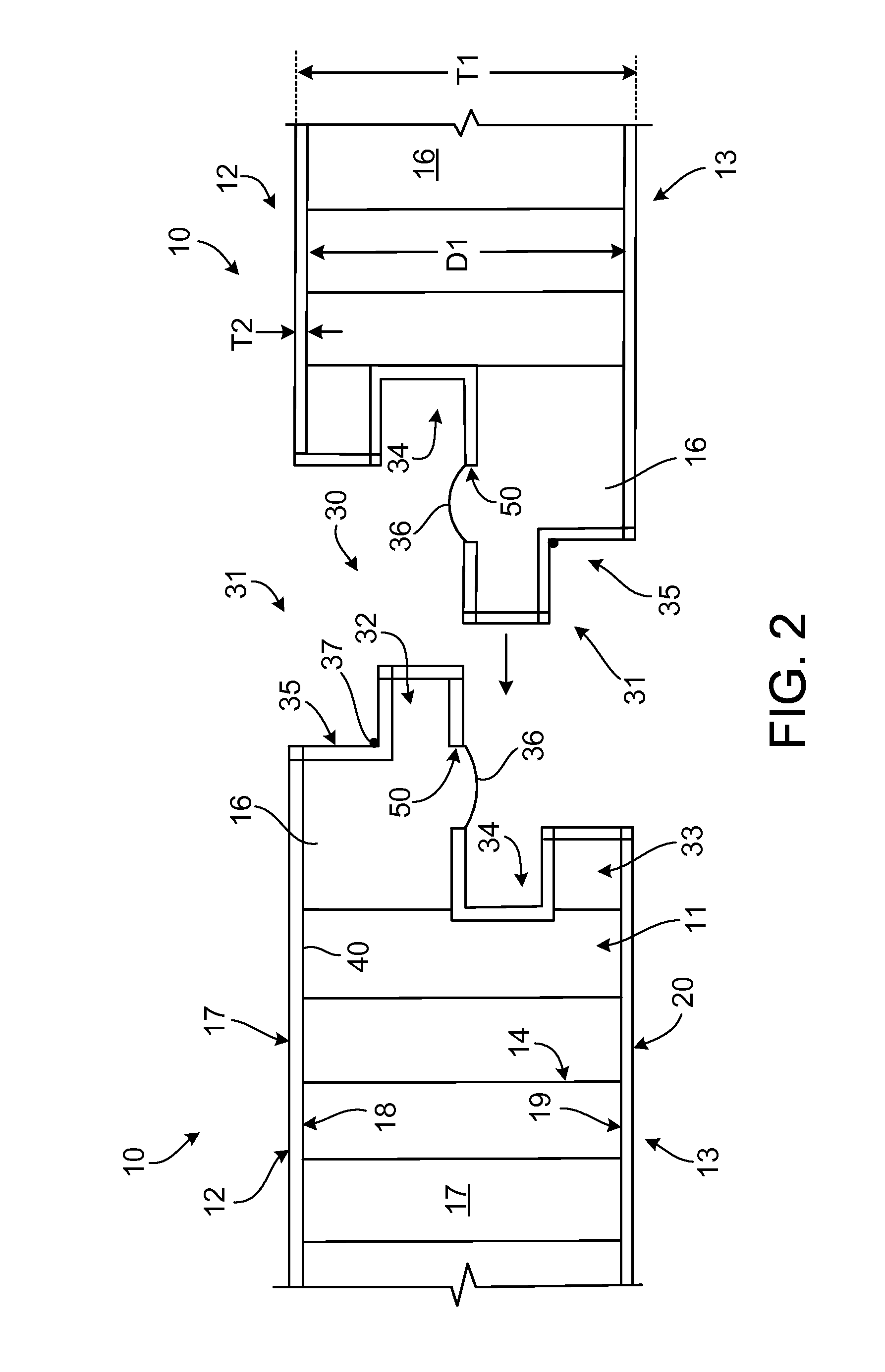Non-Planar Composite Structural Panel
a composite structural panel and non-planar technology, applied in the field of modules, can solve the problems of weak joints, weakened joints, and insufficient waterproofness or airtightness of the foregoing known joining method, so as to improve optics and reflectivity, increase load strength, and improve the effect of resistance to wind loads
- Summary
- Abstract
- Description
- Claims
- Application Information
AI Technical Summary
Benefits of technology
Problems solved by technology
Method used
Image
Examples
example
[0070]A non-planar, concave composite solar panel comprises a concave composite solar panel backing and a form fitting mirror on the concave surface of the solar panel backing. The composite solar panel is fabricated by forming an inner and outer skin of 26 ga (0.0179″) G90 galvanized steel into lid like structures. The inner and outer skins have a planar surface having dimensions of approximately 65″×67″. Side walls are formed on the edges of the skin's planar surface. The side walls are formed by folding first side tabs having dimensions of approximately 0.31″×65″ orthogonally from the skin's planar surface. Second side tabs having dimensions of approximately 0.31″×67″ are also folded orthogonally from the skins planar surface and in the same direction as the first side tabs. Two or more of the side tabs forming the side walls are notched with grooves spaced no closer than 1.0″ apart and no further than 6.0″ apart. The exact placement of the notches is dependent on the desired cur...
PUM
| Property | Measurement | Unit |
|---|---|---|
| thickness | aaaaa | aaaaa |
| thickness | aaaaa | aaaaa |
| temperature | aaaaa | aaaaa |
Abstract
Description
Claims
Application Information
 Login to View More
Login to View More - R&D
- Intellectual Property
- Life Sciences
- Materials
- Tech Scout
- Unparalleled Data Quality
- Higher Quality Content
- 60% Fewer Hallucinations
Browse by: Latest US Patents, China's latest patents, Technical Efficacy Thesaurus, Application Domain, Technology Topic, Popular Technical Reports.
© 2025 PatSnap. All rights reserved.Legal|Privacy policy|Modern Slavery Act Transparency Statement|Sitemap|About US| Contact US: help@patsnap.com



